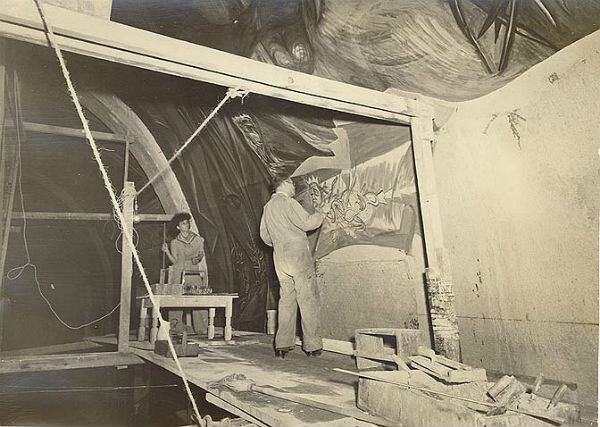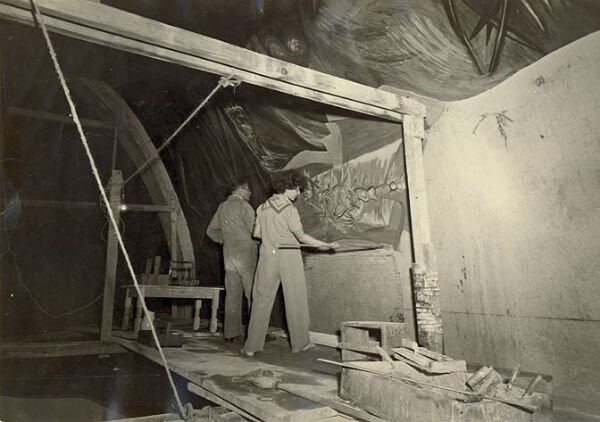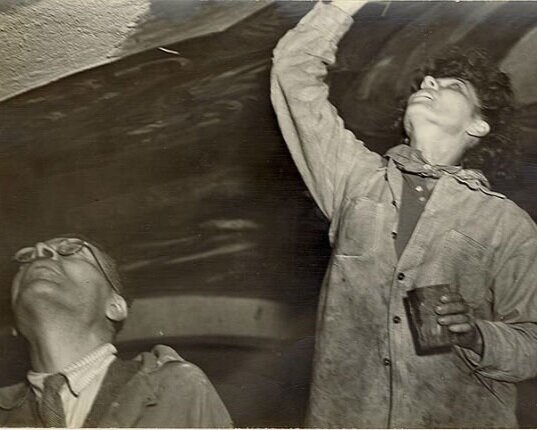Ep. 12: A Special Honor: Four Horsemen & José Clemente Orozco
In the 1930s and 1940s there were no greater muralists of the Mexican School than Diego Rivera (1886–1957), José Clemente Orozco (1883–1949), and David Siquieros (1896–1974). Annette was honored to be invited to work as Orozco’s assistant.
Diego Rivera, David Siquieros, and José Clemente Orozco stood squarely in the center of the international spotlight and each received many commissions to do frescoes in the United States and Mexico. Diego, of course, ruled supreme, not just because of his phenomenal artistic talent and his impressive endurance when working, but because as a large man with an even larger appetite for the physical pleasures of life, married to an intriguing woman, he had no equal in the media. Orozco and Siquieros were also extremely accomplished artists, but of a more serious, quieter nature.
In a period when creative women, no matter their ability, were often pushed into the shadows, often in support roles, there were no recognized female muralists. One Mexican artist came close: in 1945, Maria Izquerdo received an important mural commission for the Department of the Federal District. It was momentous for a woman to have such an opportunity and she immediately began sketches. Sadly, she was prevented from fulfilling the commission by an evaluation board dominated by Diego Rivera and David Siqueiros.
Annette with Jose Clemente Orozco as he painted her portrait.
In such a sexist environment, it was considered an honor for a woman to assist with a mural. Somewhere around 1940, while still married to Louis Stephens, Annette was chosen to work side-by-side with Orozco on Four Horsemen of the Apocalypse, a vast mural to cover the massive ceiling and dome of a church in downtown Mexico City. It was a highlight of her life. Cortez had built the Templo de Jesús after his siege of Mexico City and it is rumored that his bones are interred there.
Orozco had already painted a portrait of Annette wearing three pre-Columbian necklaces of her own design, a portrait that became notable as a part of the “20 Centuries of Mexican Art” exhibit that toured the United States, Europe, and Moscow. He knew Annette well and was charmed by some of her feminine gestures. It was said by some that her brushstroke equaled his in boldness and strength and that, in her own work, she often made use of a similar color palette.
Annette describes working on the Four Horsemen of the Apocalypse:
We worked on the curved surface of the dome, twenty meters up from the floor. Orozco asked me to paint the necklace on the harpy, since I knew more about jewelry than he did. This was a most exciting project for me, a highlight in my life, to work and study with such a genius of our time.
Orozco’s son, Clemente, would later write that he was bewildered at first at Annette’s participation since his father was not inclined to accept assistants easily:
What I ignored then was that Orozco found Annette to be the ideal model for the character of the matron in the Apocalypse scene due to the body postures she naturally and gracefully assumed, especially her frequent tendency to fix her hair with her hand.
The gesture, to those who knew Annette, is immediately recognizable, although the figure itself reflects none of her beauty. Clearly, the necklace around her neck is reminiscent of her original designs. That same feminine gesture is seen in several etchings done by Orozco in subsequent years. That the two artists shared a closeness is indisputable.
Today, about 80 years after these two extraordinary artists worked together, standing high above the church’s floor on unsteady scaffolding, the magnificence of the work leaves visitors awestruck.
In spite of her work with Orozco and her continuing dedication to developing her art, it would not be until 1947 that she began to receive well-deserved recognition. # # #
MORE ABOUT JOSE CLEMENTE OROZCO
Paradigm Productions produced a wonderful film about Orozco titled Man of Fire. It was broadcast in 2007 on PBS American Masters and narrated by Anjelica Huston. Be sure to check it out if you'd like to know more about this master muralist who is relatively unknown in the United States today. And here is a video about his art you may enjoy.





